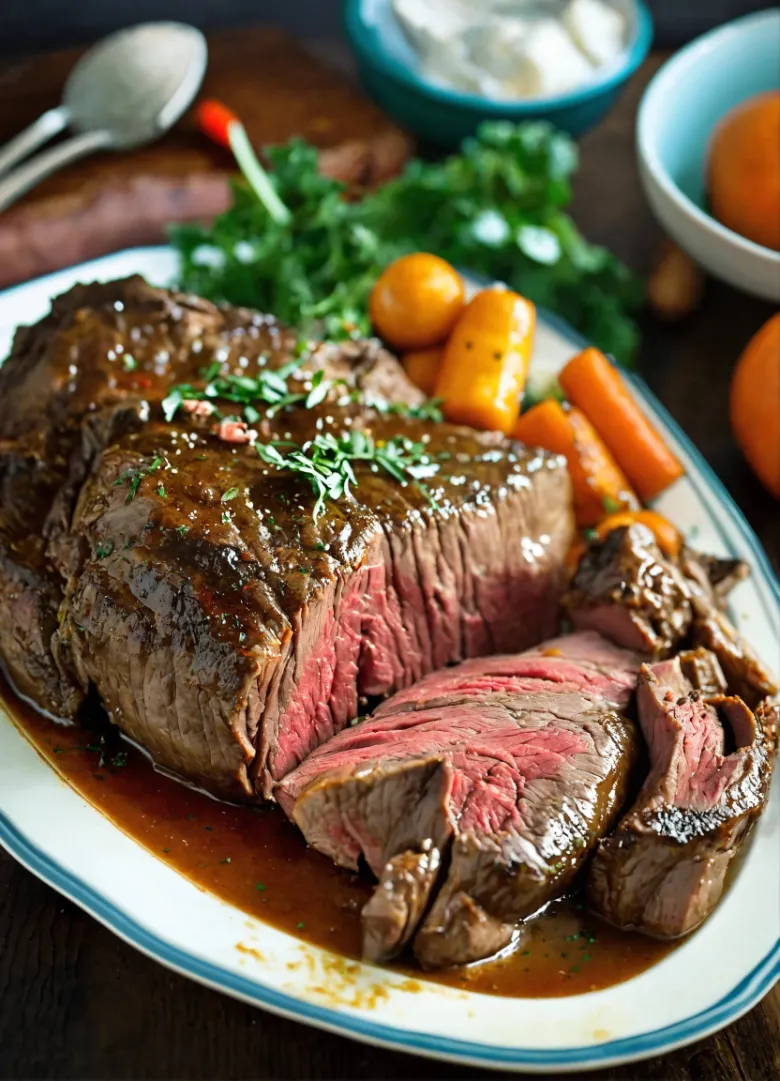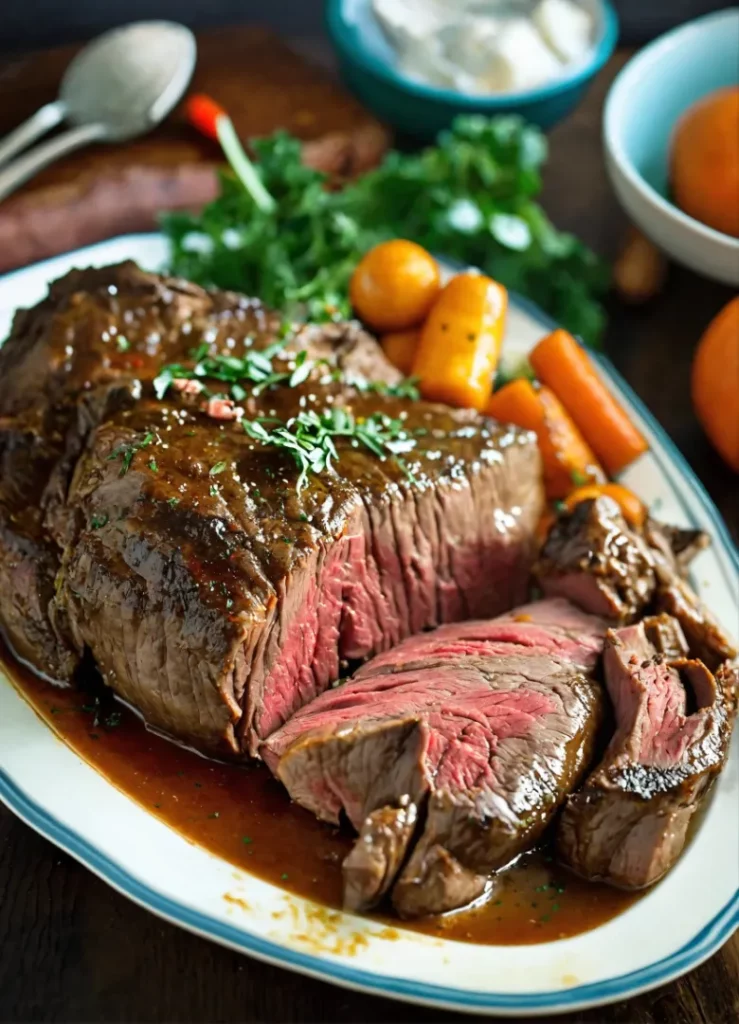Introduction about beef chuck roast
The beef chuck roast, a cornerstone of traditional cooking, is celebrated for its robust flavor and succulent texture. Hailing from the chuck section of the cow, which includes the shoulder area, this cut embodies the heartiness of beef with its rich marbling and deep taste. It’s a staple in a variety of culinary traditions, serving as the centerpiece in Sunday family dinners, festive gatherings, and comfort food recipes around the globe.
In the culinary world, the beef chuck roast is synonymous with slow-cooked, tender dishes that evoke a sense of home and warmth. Its versatility allows it to be prepared in numerous ways, from braising and slow-cooking to pot roasting, each method unlocking layers of flavor and tenderizing the meat to perfection. The chuck roast’s significance extends beyond its taste; it represents a heritage of communal dining and rustic cooking techniques, making it a revered ingredient in kitchens across cultures.
What is Beef Chuck Roast?
The beef chuck roast is a cut of meat that comes from the chuck section of the cow, which is the area around the shoulder. This part of the animal works hard, resulting in a cut that is full of connective tissue and marbling. This composition gives the chuck roast its characteristic rich flavor and, when cooked properly, a tender texture that is highly sought after in the culinary world.
Characteristically, the chuck roast is a thick, square cut that is often sold with the bone in, although boneless versions are also available. The presence of fat and connective tissue in the chuck makes it ideal for slow cooking methods, which melt these components into the meat, infusing it with flavor and ensuring it becomes tender and juicy. The chuck roast is often associated with hearty, comforting dishes like stews, braises, and pot roasts, where it is cooked slowly to break down the tough fibers and achieve a melt-in-the-mouth tenderness.
The chuck section of the cow yields various cuts beyond the traditional chuck roast, including:
- Chuck Eye Roast: Located close to the ribeye, this cut is tender and flavorful, often considered a budget-friendly alternative to the more expensive ribeye steak.
- Chuck Shoulder Pot Roast: Also known as the English roast, this cut is well-suited for slow-cooking methods, becoming tender and flavorful over time.
- Boneless Chuck Short Ribs: Cut from the chuck eye roll, these are perfect for braising and barbecue, offering a rich and meaty flavor.
- Flat Iron Steak: This cut comes from the shoulder blade and is known for its tenderness and rich beefy flavor, ideal for grilling.
For a deeper understanding of beef cuts, visit the American Beef Association.
Selecting the Best Chuck Roast
Choosing the right beef chuck roast is crucial for ensuring a flavorful and tender result in your cooking. When selecting this cut, several factors come into play, including marbling, size, and whether to opt for bone-in or boneless.
Marbling
Marbling refers to the white flecks of fat within the muscle tissue. This fat melts during cooking, adding flavor and moisture to the meat. A good chuck roast should have consistent marbling throughout. The marbling is not only a sign of quality but also a predictor of how tender and juicy the roast will be after cooking. Look for cuts with a good distribution of marbling, as this will enhance the taste and texture of the roast.
Size
Consider the number of people you are serving when selecting the size of your chuck roast. Generally, a half-pound (about 225 grams) per person is a good guideline. However, if you want leftovers or are serving hearty appetites, you might want to aim for more. It’s also essential to ensure the roast will fit in your cooking vessel, whether it’s a slow cooker, Dutch oven, or roasting pan.
Bone-In vs. Boneless
The choice between bone-in and boneless chuck roast depends on personal preference and cooking style. Bone-in roasts often have more flavor and can be more tender because the bones conduct heat inside the meat during cooking, enhancing the flavor and juiciness. However, boneless cuts are easier to carve and might cook a bit faster due to the absence of bone. Consider the ease of serving and your desired outcome when making this choice.
Tips on Purchasing Quality Beef Chuck Roast
- Source Responsibly: Purchase your meat from reputable butchers or markets known for quality products.
- Ask for Advice: Don’t hesitate to ask your butcher for recommendations on the best cuts available.
- Inspect the Meat: Look for a vibrant, red color and avoid cuts that look dry or have discolored spots.
- Consider Aging: Ageing can improve the flavor and tenderness of beef, so inquire about the aging process of the meat you’re buying.
By keeping these factors and tips in mind, you can select a quality beef chuck roast that will elevate your cooking and provide a delicious, memorable meal. Quality matters in achieving the perfect roast. Ensure you’re following safe meat handling practices by consulting Food Safety Guidelines.
Culinary Uses of Chuck Roast
The beef chuck roast is celebrated for its versatility in the kitchen, making it a favorite for a plethora of dishes across various cuisines. Renowned for its deep, meaty flavor and ability to become tender and succulent with slow cooking, chuck roast is often the star ingredient in comfort food classics.
In American cuisine, the chuck roast is synonymous with the traditional pot roast, where it is braised slowly with root vegetables, herbs, and broth, creating a rich and hearty meal that is a staple in many households. Similarly, in Mexican culinary traditions, chuck roast is used in barbacoa, a dish where the meat is slow-cooked with a blend of spices and chilies until tender enough to shred.
European cuisines also have a place for chuck roast, notably in the French boeuf bourguignon, where it is stewed with wine, mushrooms, onions, and carrots, highlighting its ability to absorb and enhance complex flavors. In Italian kitchens, the chuck is often used for stracotto, a slow-cooked beef stew that is rich and aromatic, served over polenta or pasta.
The chuck roast’s adaptability makes it an essential component of many cultural comfort dishes, from stews and soups to braises and roasts. Its importance in culinary traditions around the world is not just due to its flavor and texture but also its role in communal and family meals, often serving as the centerpiece of gatherings and celebrations. Explore the variety of dishes you can create with this cut in our guide to pot roasts.
Cooking Techniques for Chuck Roast
Cooking a beef chuck roast to perfection requires techniques that tenderize the meat while enriching its flavors. The most popular methods are slow cooking, braising, and oven roasting, each bringing out the best in this hearty cut.
Slow Cooking
Slow cooking is an ideal method for chuck roast, transforming the tough fibers into a tender, pull-apart delight. This technique involves cooking the meat at a low temperature for an extended period, allowing the connective tissues to break down without drying out the meat. Slow cookers or crock pots are perfect for this method, as they maintain a consistent low heat. To achieve the best results:
- Season the roast generously with salt, pepper, and your choice of herbs and spices.
- Sear the meat in a hot pan before transferring it to the slow cooker to lock in flavors.
- Add a liquid base, like broth, wine, or a sauce, to create a moist environment and add flavor.
- Cook on a low setting for 6-8 hours until the meat is fork-tender.
Braising
Braising combines searing with slow cooking in a liquid, creating a flavorful and tender chuck roast. This technique is excellent for developing complex flavors and a succulent texture. Here’s how to braise a chuck roast effectively:
- Preheat the oven to around 325°F (163°C).
- Season and sear the roast on all sides in a heavy pot or Dutch oven.
- Remove the roast and sauté onions, garlic, and other aromatics in the same pot.
- Deglaze the pot with a liquid like stock, wine, or a mixture of both, scraping up the browned bits.
- Return the roast to the pot, adding enough liquid to come halfway up the meat.
- Cover and cook in the oven for 3-4 hours, or until tender.
Oven Roasting
Oven roasting at higher temperatures can also produce a flavorful chuck roast, especially when a crusty exterior is desired. For oven roasting:
- Preheat your oven to a high temperature (around 450°F or 232°C) to start.
- Season the roast well and place it in a roasting pan.
- Roast at high heat for about 20 minutes, then reduce to around 325°F (163°C) and continue roasting until the desired doneness is reached.
- Let the roast rest before slicing to retain its juices.
Tips for Tender and Flavorful Meat
- Marinate the roast beforehand to infuse flavor and tenderize the meat.
- Keep the roast covered during the cooking process to prevent drying out.
- Use a meat thermometer to ensure proper doneness without overcooking.
- Allow the roast to rest after cooking to redistribute the juices throughout the meat.
Discover more about slow-cooking techniques in our article on braising meats.
Recipe Highlight: Classic Chuck Roast Recipe
A classic chuck roast recipe transforms this hearty cut of beef into a succulent, flavorful dish. Here’s how to make a traditional chuck roast that will impress your guests and satisfy your comfort food cravings.
Ingredients
- 3 to 4 pounds of beef chuck roast
- Salt and freshly ground black pepper
- 2 tablespoons of vegetable oil
- 1 onion, sliced
- 3 carrots, cut into 2-inch pieces
- 3 celery stalks, cut into 2-inch pieces
- 4 garlic cloves, minced
- 2 cups beef broth
- 1 cup red wine (optional)
- 2 tablespoons tomato paste
- 1 teaspoon fresh thyme leaves
- 2 bay leaves
Preparation Tips
- Allow the chuck roast to come to room temperature for about 30 minutes before cooking, which promotes even cooking.
- Pat the meat dry with paper towels to ensure a good sear.
Cooking Process
- Season the Meat: Generously season the chuck roast with salt and pepper on all sides.
- Sear the Roast: In a large Dutch oven or heavy-bottomed pot, heat the oil over medium-high heat. Add the chuck roast and sear until browned on all sides, about 4-5 minutes per side. Remove the roast and set aside.
- Sauté Vegetables: In the same pot, add the onion, carrots, and celery. Cook until they start to soften, about 5 minutes. Add the garlic and cook for another minute.
- Deglaze: Pour in the beef broth (and red wine, if using), scraping up the browned bits from the bottom of the pot. Stir in the tomato paste, thyme, and bay leaves.
- Cook the Roast: Return the chuck roast to the pot. The liquid should come about halfway up the sides of the meat. Bring to a simmer, then cover and transfer to a preheated 325°F (163°C) oven.
- Braise: Cook the roast in the oven for about 3 to 4 hours, or until it is fork-tender. Baste the roast occasionally with the cooking liquid.
- Serve: Remove the bay leaves and thyme stems. Transfer the roast and vegetables to a serving platter. If desired, skim the fat from the cooking liquid and serve it as a sauce over the meat.
This classic chuck roast recipe, with its rich flavors and tender meat, is a testament to the culinary potential of this robust beef cut. For detailed cooking instructions, check out our classic roast recipe.
Nutrition and Health Aspects
The beef chuck roast is not only prized for its flavor and texture but also for its nutritional value. This cut of beef is a rich source of essential nutrients, playing a vital role in a balanced diet.
Nutritionally, chuck roast is high in protein, providing a substantial amount of this crucial macronutrient needed for muscle repair, growth, and overall bodily function. It’s also a good source of iron, which is essential for forming red blood cells and transporting oxygen throughout the body. Additionally, chuck roast contains zinc, a mineral important for immune function, wound healing, and DNA synthesis.
Beyond these, the chuck roast offers vitamins like B12, crucial for nerve function and the production of DNA and red blood cells. It also provides selenium, which is important for reproductive health, DNA production, and protecting the body against damage from free radicals and infections.
In the context of a balanced diet, beef chuck roast can be a valuable protein source, especially when cooked in ways that minimize added fats and salt. It’s best enjoyed as part of a meal with a variety of vegetables and whole grains, contributing to a diet that supports overall health and well-being. Moderation is key, as part of a diet that includes a variety of protein sources, to maintain nutritional balance and promote heart health.
FAQs
Conclusion
The beef chuck roast is a versatile, flavorful cut, loved for its rich taste. It becomes tender and savory through slow cooking, braising, or roasting. This cut is nutritious, offering protein, minerals, and vitamins.
When choosing a chuck roast, consider marbling, size, and bone-in or boneless options. These factors affect flavor and cooking results. With proper preparation and cooking, chuck roast enhances a variety of dishes. It brings culinary heritage and nutrition to your table.
Chuck roast is ideal for both special occasions and weeknight dinners. It offers a rich, home-cooked meal experience that is both satisfying and nourishing.



